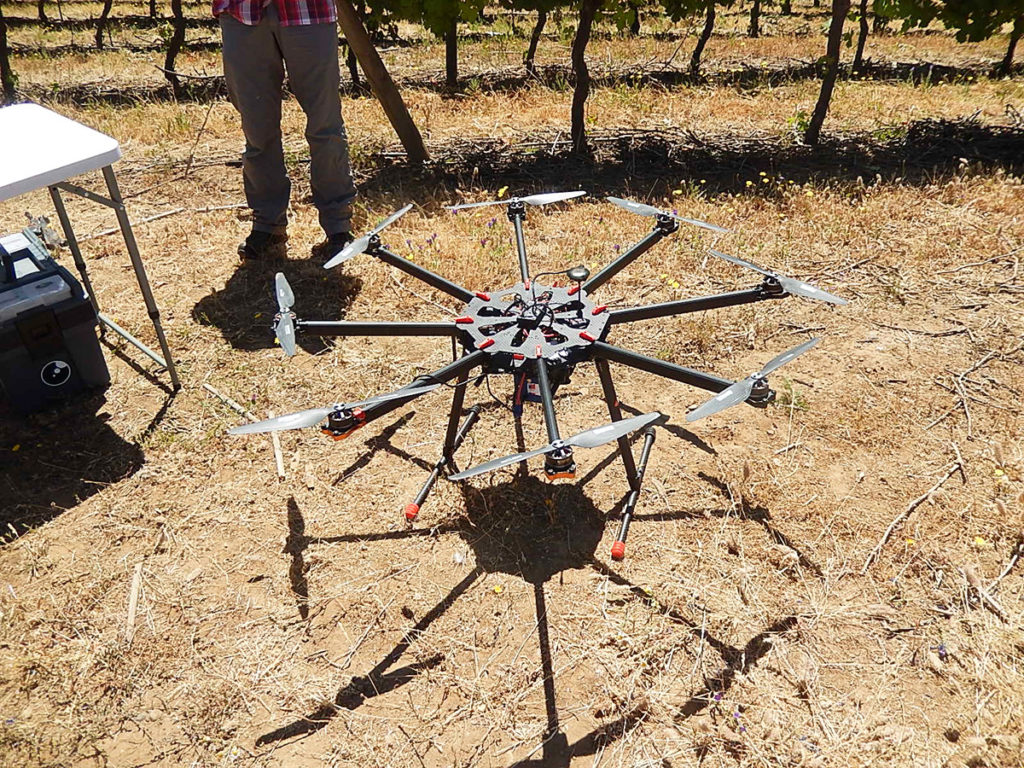- Innovation
- March 1th, 2018
Artificial intelligence and drones: New harvest volume prediction system
Responding to the need for a more accurate crop volume prediction system, the CRI is leading, along with the Enological, Agricultural and Grape and Wine Purchase areas, the development of an Artificial Intelligence model that, through the use of drones and remote sensors, aims to deliver a more accurate projection.
The Center for Research and Innovation (CRI) channeled an important need for the Agricultural and Enological areas: the complexity to predict the volume of the harvest. The error in the estimation of this index can have important repercussions both economically and logistically, so it is essential to advance in an earlier and more accurate projection.
For this reason, the CRI leads, together with the company Smartdici and the support of Corfo, a forecast project of harvest volume, which implies the creation of new models based on Artificial Intelligence with the ability to predict with greater precision the amount of grapes available for the production of wines each season, and to deliver this information with more anticipation.
The CRI, together with Smartdici, postulated and won the support of Corfo’s “Prototipos de Innovación –i+I+D Empresarial para sectores estratégicos” and “Empaquetamiento de Innovaciones –i+I+D Empresarial”.
This new measurement system uses drones and multispectral cameras to obtain a large volume of vineyard data. First, the drones fly over the vineyards, capturing multispectral images. The information collected from these images is then uploaded, together with other terrain data, into the Artificial Intelligence model, which allows identifying, quantifying and predicting productive and performance indicators.
During the tests carried out with this new system, an error of prediction of between 2% and 9% was recorded in the experimental conditions and on the harvest date, errors that, if kept in prediction on the date of the fruit set, would be very good results as opposed to the methodologies traditionally used, which yield errors of between 20% and 30%.
Collaboration for innovation
The CRI´s researchers and professionals in charge of this project trust that the models will continue to be perfected until they achieve lower levels of error and that the application of the system extends to the agricultural operations of the winery and grape producers. “At the end of the season we hope to have models that not only work under experimental conditions, but in a real productive context,” explains Álvaro González, Deputy Manager of Research and Development.
This project is part of one of the strategic R + D programs of the CRI: Instrumentation, automation and application of Information Technology (IT). In this sense, José Cuevas, Researcher in Engineering, highlights that a system such as crop forecasting can, in the near future, be applied to a larger scale in the company: “We hope that the use and implementation of these models will be done in a cost-effectively way and can be transferred to productive areas.”
For Juan Ramos, managing partner of Smartdici, the experience of working with the CRI “has been enriching and collaborative from both sides. We believe that there is much to explore and develop in viticulture, and there are many challenges that can be addressed by Artificial Intelligence”.
In addition to the collaboration of Smartdici, the CRI has worked on this project with interns and undergraduate students and master of the École Supérieure d’Agriculture d’Angers, University of Lisbon and Universidad Autónoma.
This project represents an example of collaboration for innovation between two private companies – Smartdici and Viña Concha y Toro – with the support of Corfo.



